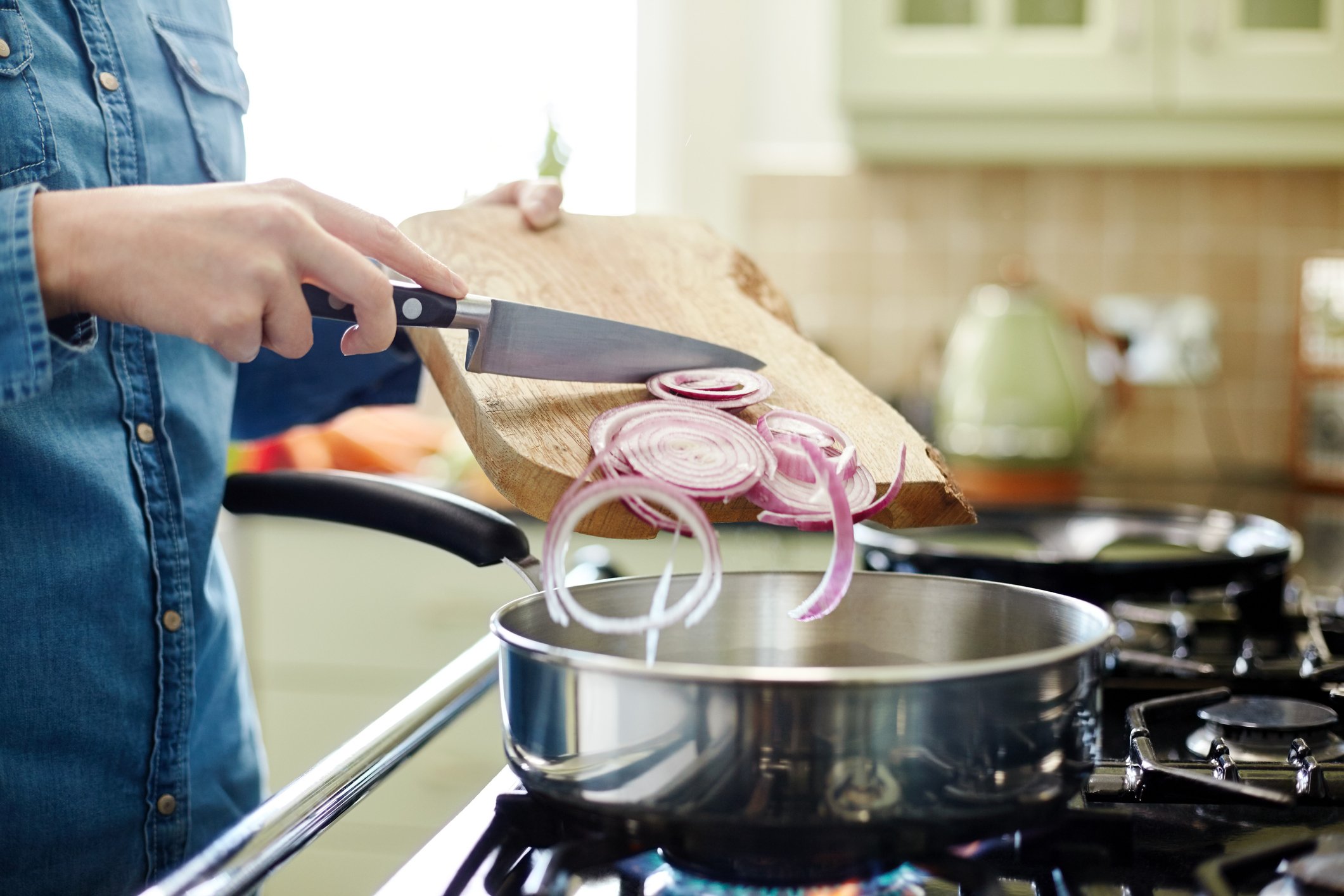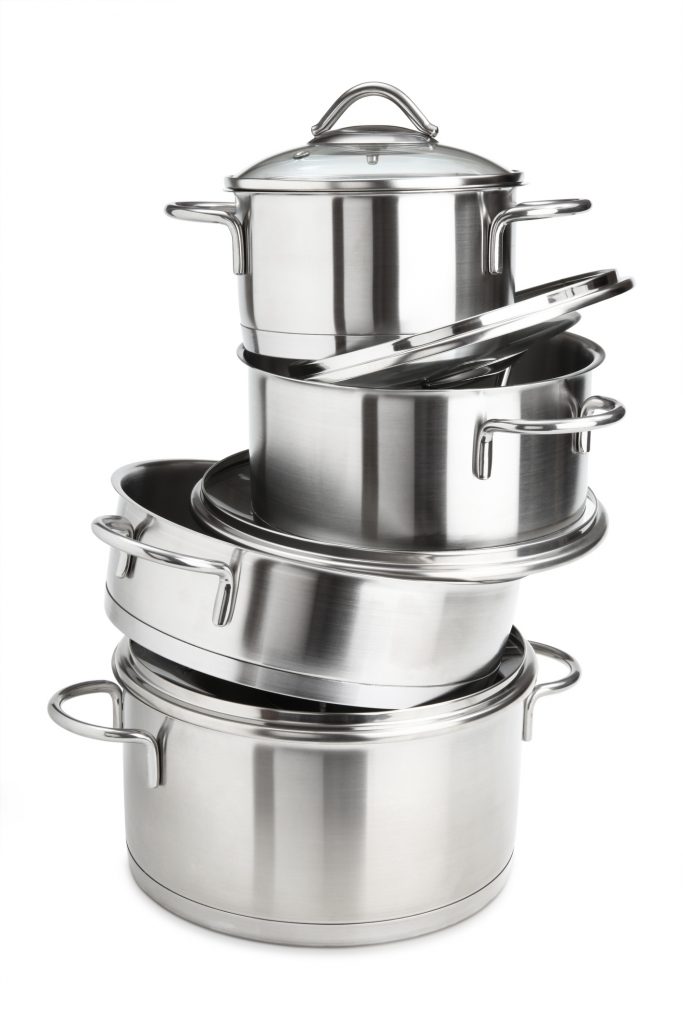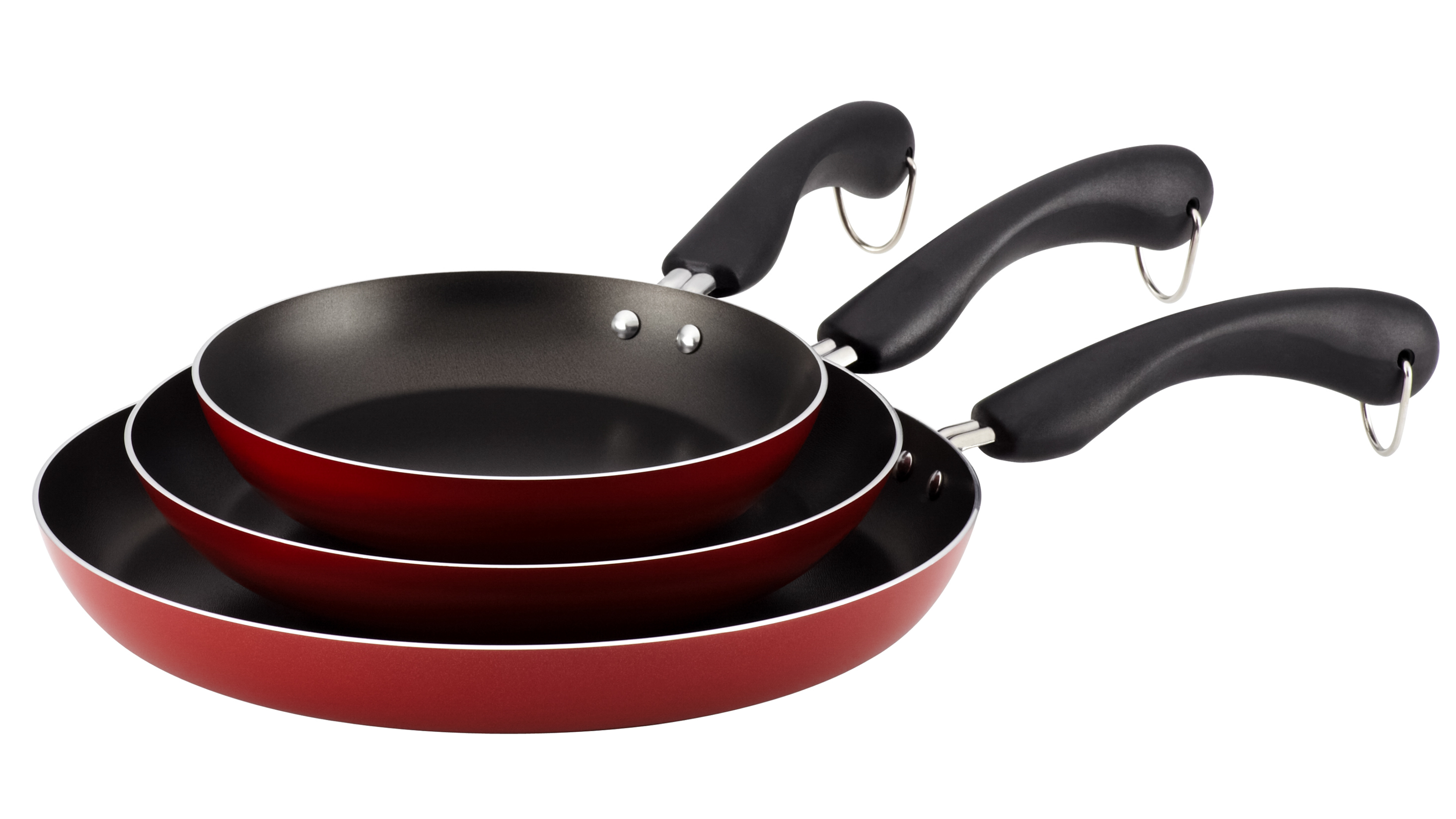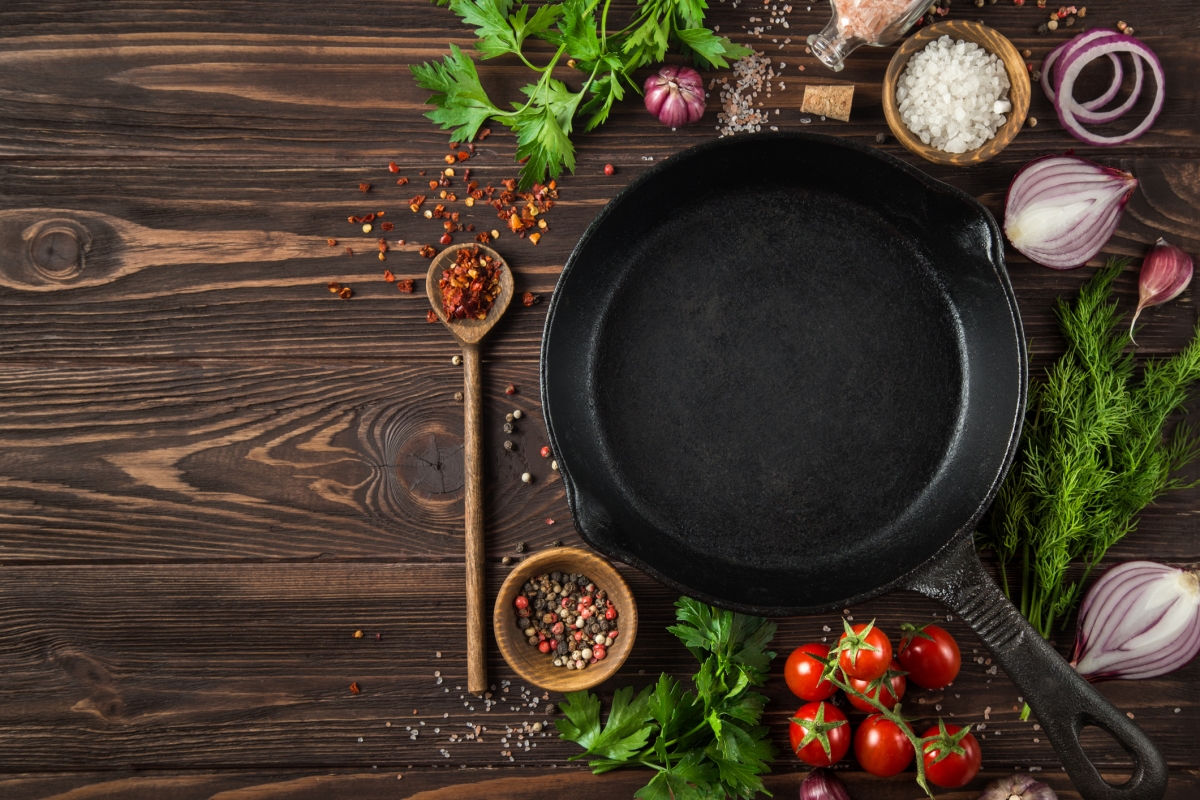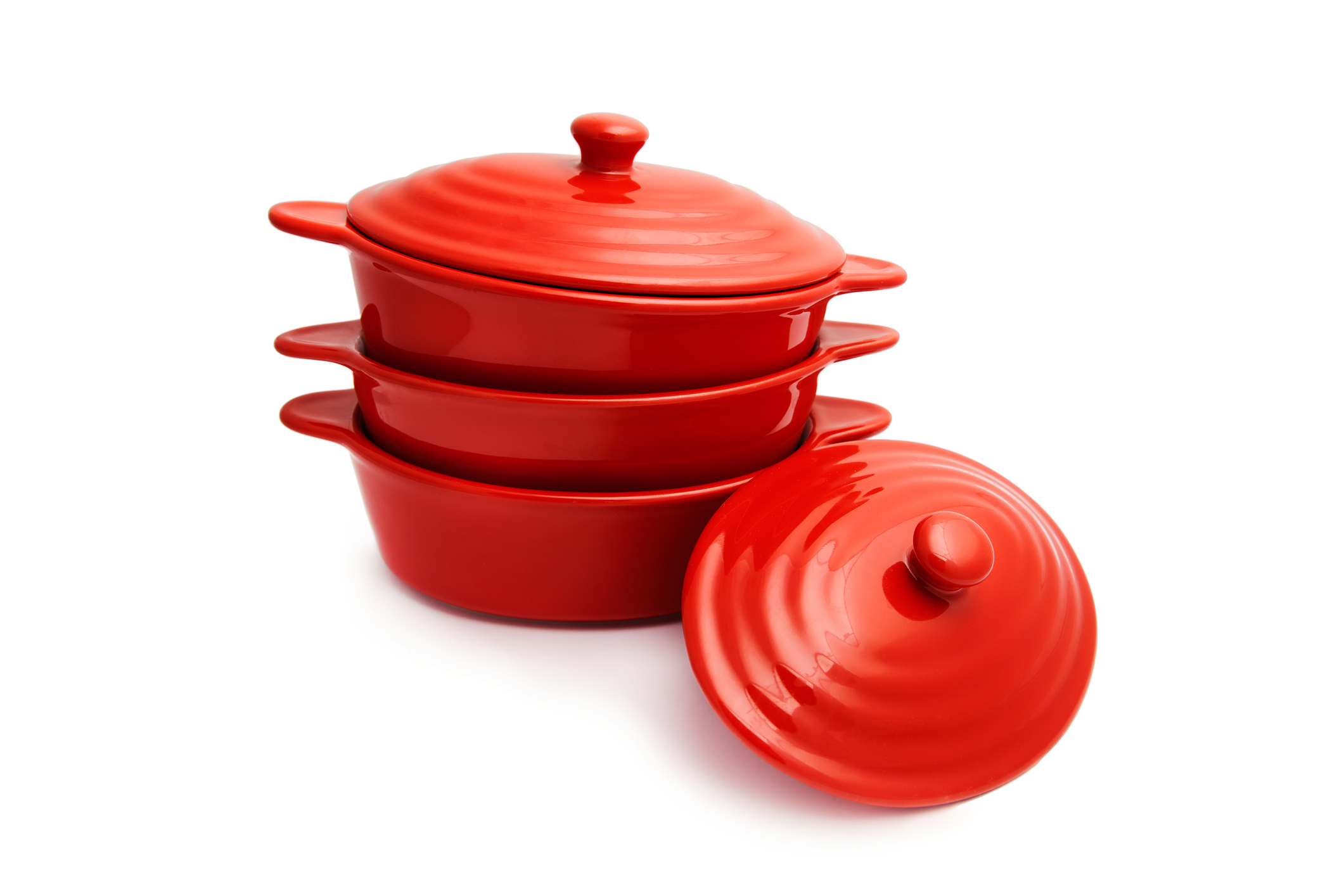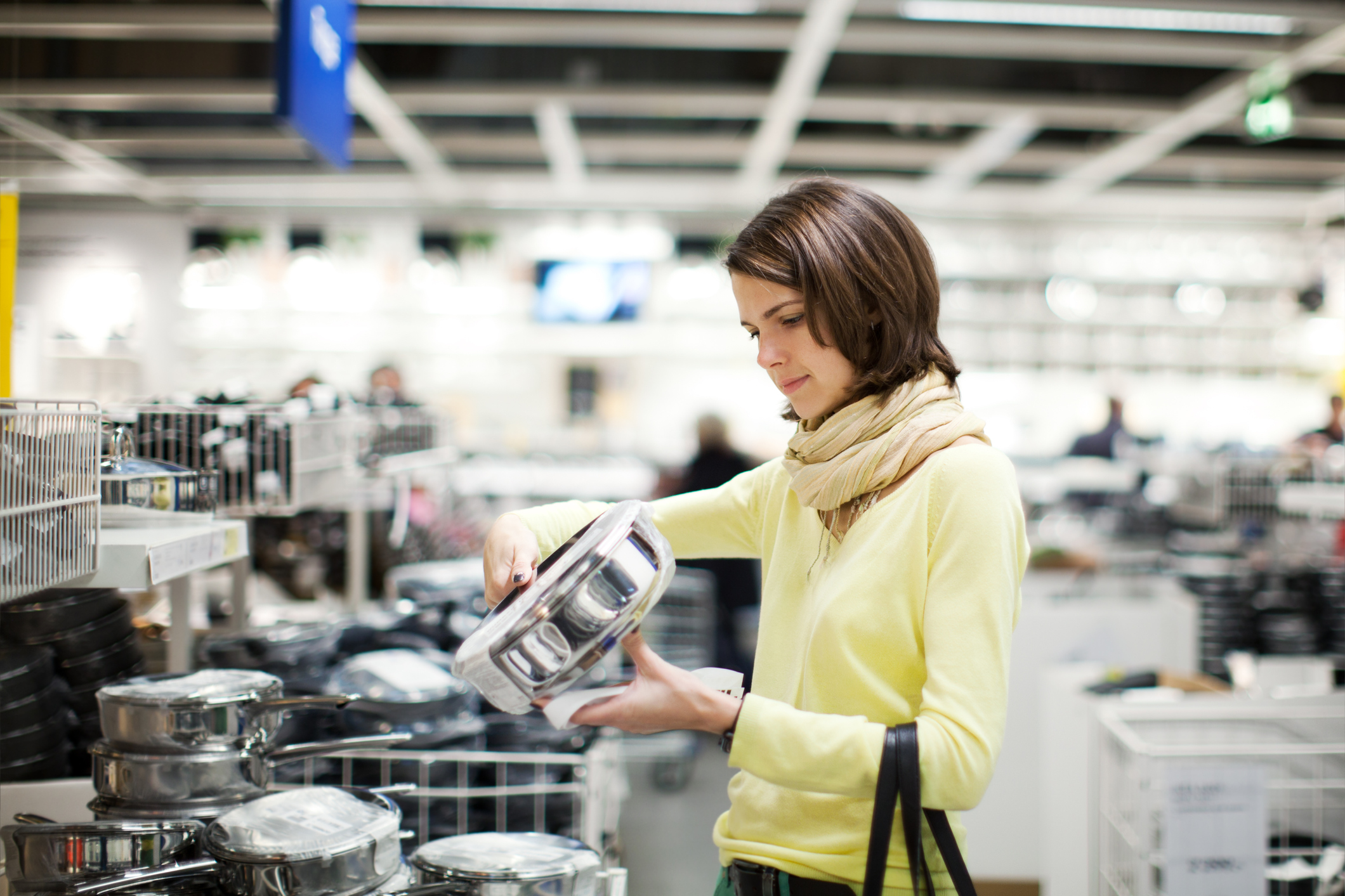You’ve just returned from the store or farmers market with an armful of fresh, delicious, organic produce. You’re looking forward to a piping hot, comforting, scrumptious, health-enhancing meal. Once everything’s chopped and prepped, you’re about to start cooking. But wait! Are you using healthy cookware? Or is that sauté pan or stockpot going to leach toxic chemicals into the meal you’re about to eat, and into the air you’re breathing?
These days, you can choose from an overwhelming number of cookware options: stainless steel, cast iron, ceramic, copper, aluminum, clay, along with many surfaces marketed as non-stick. Some of these are fine, while others can be bad for your health, and bad for the planet.
What to Consider When Choosing Non-Toxic and Healthy Cookware
To figure out which healthy cookware is best for you, you’ll want to consider the chemicals used in the cookware. You’ll also want to determine how durable the cookware is, your personal cooking needs and, of course, the price. Ultimately, you’ll need to weigh the pros and cons of each cookware type and determine which one best fits your lifestyle. Let’s look at each of these considerations in a bit more depth.
Chemicals in Cookware
The chemicals used in the cookware itself don’t just stay in the pots and pans. They can actually leach into the food you cook and get released into the air when the cookware is heated. Which ones leach the most, and the most harmful chemicals? It depends on what the primary components of the cookware are, but many brands of non-stick cookware are among the worst offenders.
Durability of Pots & Pans
How long will the cookware actually last? Nobody likes having to throw a perfectly good pan “away” (i.e., into a landfill) after just a year or two of use. We all want to make smart purchases that will last us for a long time. Lifespan often depends on the maintenance required to keep your cookware in tip-top shape. It can also depend on how easily scratched or damaged the materials can get. Typically, cast iron and good quality stainless steel cookware can last for decades, while most non-stick pots and pans wear out every few years.
Your Cooking Needs
Do you do more sauteéing, boiling, steaming, or baking? Is non-stick cookware necessary for the food you prepare? Do you only cook occasionally, and just need to invest in a couple of higher quality pieces as opposed to an entire set? Additionally, buying multi-purpose pots and pans will minimize waste and save space in your kitchen.
Price
Cookware tends to be one of those things in life where you get what you pay for. In the long run, you’re better off with a durable pan that will weather heat, cold, bumps, and heavy use without degrading. But if you can’t afford a top-notch brand, don’t stress. There are plenty of reasonably priced middle-of-the-road options that can be relatively safe and last a long time.
There are thousands of healthy and not-so-healthy cookware options out there. Here are the pros and cons of some of the most popular, starting with ones you may want to avoid, which ones are moderately safe, and which ones appear to be the safest.
The Least Safe Cookware
Non-Stick Teflon Coated Cookware
Although these can save you the trouble of having to oil your pan before cooking and are easy to use and clean, non-stick doesn’t mean non-toxic. When most non-stick cookware is heated, it emits toxic fumes into the air. Toxicity is such a problem that the manufacturer labels on non-stick pans often warn consumers not to use high heat with these products. However, tests funded by the Environmental Working Group (EWG) show that in just a few minutes on a typical stove, non-stick cookware could exceed temperatures at which the coating breaks apart and emits toxins.
One of the most widespread non-stick coatings is Teflon, which comes with many concerns. Bird veterinarians have known for decades that many forms of non-stick cookware can produce fumes that are dangerous to pet birds. As early as 1986, a Chicago veterinarian called “Teflon toxicosis” a “leading cause of death among birds.” Hundreds of pet birds were, and still are, killed by the fumes from non-stick Teflon cookware.
Have you ever heard of the “canary in the coal mine?” Birds can be more sensitive to dangerous gases than humans. But if something is lethal to birds, then it doesn’t take a coal miner to guess that it probably isn’t good for you, either.
If you must cook with Teflon or other typical non-stick pans, make sure to use low or medium heat and stir with a wooden spoon to minimize chemical exposure.
Aluminum Cookware
Aluminum cookware can present problems, too. Studies show the metal can leach into food, especially when you’re cooking tomato products or other acidic foods. If too much aluminum enters your body, it can settle into your internal organs, including your brain, liver, heart, and bones, and eventually cause disease. Aluminum exposure has been studied for its potential link to Alzheimer’s disease for many years.
What about anodized aluminum? In this case, there’s a protective layer over the aluminum to increase durability, but it may still break down over time.
Copper Cookware
Copper looks nice, but it can be toxic. If it’s not lined with stainless steel — or if it has a thin coating and the coating scratches off — copper can also leach into your food and enter your body. The coating can also start wearing off after being scrubbed and cleaned. Even though small amounts of copper are necessary for health, too much copper can be harmful and can contribute to neurodegenerative disease.
Copper cookware also tends to cost a pretty penny and be high maintenance. Because it’s a soft metal, copper conducts heat well, but it has to be polished to maintain its shiny appearance. Copper bottoms on stainless steel pans, however, give you the best of both worlds — providing you with a safe material against the food, and the conductive benefits of copper.
Moderately Safe Cookware
Cast Iron Cookware
Cast iron lasts a long time, and it spreads and maintains heat really well, so your food heats thoroughly and evenly. But it’s heavy and fairly high maintenance. Pans also require seasoning with a coating of oil to prevent rusting and sticking. As a result, they have special cleaning instructions (it shouldn’t go in the dishwasher or be washed with detergent). And you should thoroughly dry it after each use.
Because some of the iron makes its way into your food, it’s important to be cautious about how much you use it. Too much iron can be toxic. If you’re iron deficient, cast iron cookware can be a simple, though highly imprecise, way to add iron to your diet. (For more on the pros and cons of iron, how much you need, and how much is too much, click here.)
One of our recommended cast iron cookware brands is Lodge, which has been around for a long time with an excellent reputation for quality. For a link to their most popular skillets, click here.
Glass Cookware
Glass is non-reactive, meaning it doesn’t release chemicals into food. It’s also usually inexpensive and is safe to place in the microwave and dishwasher. You can use most glass cookware on electric stoves, but not gas ones.
On the cons side, you should never place hot glass cookware on a cold surface as it can crack or even shatter. Additionally, glass is heavier and more fragile than many other types of cookware, doesn’t work on induction stoves, and is not non-stick.
Some of our favorite glass cookware options include the Pyrex Baking Pan here and the Visions 5L Round Dutch Oven here.
Carbon Steel Cookware
Carbon steel cookware has a very similar makeup to cast iron, but it’s lighter weight than cast iron, making it easier to use and store. It can also withstand very high temperatures.
However, carbon steel does require seasoning like cast iron, and it degrades in the presence of acidic foods like tomatoes. Carbon steel also develops what’s called a patina, a brownish film caused by oxidation over time, which some people say makes food taste a little funny. Additionally, it can leach iron into food, which in most cases is not something you want.
Like cast iron, carbon steel cookware cannot go in the dishwasher. And it also takes a while to heat up and doesn’t retain its heat, making it relatively inefficient.
Some well-rated carbon steel cookware products include the Lodge 12 Inch Seasoned Carbon Steel Skillet here and the 14 inch Craft Wok Traditional Hand Hammered Carbon Steel Pow Wok here.
Best & Healthiest Cookware Materials to Consider
Why Stainless Steel Cookware Is Safe
Stainless steel is a healthy cookware choice that can last a long time. It works well for pressure cookers and big pots of soup, steamed vegetables, and cooking legumes and grains. Stainless steel is also a great choice for sautéing once it’s nice and hot. However, it may require a little water or vegetable broth to keep food from sticking. Learn more about how to sauté oil-free in non-toxic pans here.
High-quality stainless steel cookware can be pricey. But keep in mind that a well-made stainless steel pot can last for decades.
A few highly consumer-rated stainless steel products include: the Cuisinart MCP-12N Multiclad Pro Stainless Steel Cookware Set here, the Cook N Home 10-Piece Stainless Steel Cookware Set here, and the Cooks Standard 12-Inch/30cm Classic Stainless Steel Everyday Chef’s Stir Fry Pan here.
Enamel-Coated Cast Iron Cookware: A Healthier Option for Cast Iron
Enameled cast iron has a porcelain coating — made from powdered glass — which makes it rust-proof and easy to maintain. This version is naturally non-stick, so no seasoning is required before using it. It also won’t leach chemicals or iron, is unaffected by acidic foods, is relatively lightweight, and works on induction stoves. Good brands are durable, but the enamel coating can degrade over time. So, you may need to replace heavily used pans every few years.
Unlike regular cast iron, enamel-coated cookware comes in a variety of colors besides black. You can also regularly clean it with soap, which can destroy the seasoning on regular cast iron. Enameled cast iron is also a good choice if you want to throw it in the dishwasher — something you can’t do with regular cast iron cookware. One healthy cookware product made from enamel-coated cast iron is this skillet by Le Creuset.
Ceramic or Ceramic Coated Cookware as a Healthier Option
Ceramic or ceramic coated are healthy cookware options for a number of reasons. With 100% ceramic cookware, you don’t have to worry about coatings or leaching of chemicals. You can bake with them and use on the stove without concern. Other perks of ceramic are its’ scratch resistance and slow and even cooking.
With ceramic coated cookware, you will want to make sure it’s free of lead, cadmium, poly- and perfluoroalkyl substances (PFAs), and perfluorooctanoic acid (PFOA) — a carcinogenic chemical released when PFAs are heated. While these chemicals are widespread in ceramic coated cookware, it isn’t too hard to find cookware without them. Manufacturers will generally include “PFA-free,” PFOA-free,” and “lead- and cadmium-free” on their packages or websites.
Ceramic coated cookware works on induction stoves, but 100% ceramic does not. Another con is that while it is strong, solid ceramic cookware can break when dropped onto a hard surface.
Xtrema Pure 100% ceramic cookware is a safe and solid option. You can use it on top of the stove, in the oven and under the broiler. Xtrema ceramic is scratch resistant and easy to clean. Find out more and get a special 15% discount for Food Revolution Network Members, here. (Use coupon code: FRN15)
Biocompatible Titanium Cookware Safety Advantages
Titanium is often used to make sterile surgical instruments because it’s considered a “biocompatible” metal, meaning it won’t react adversely with the human body. Cookware made with titanium is lighter weight, durable, doesn’t leach into your food, and is typically more affordable than many other options. Furthermore, it’s highly resistant to rust and scratching. When exposed to air and water, the metal reacts with the oxygen it’s exposed to, creating a natural titanium dioxide shield around itself. Pretty cool, huh?
One of the biggest downsides to titanium cookware, however, is that it takes a while to warm up and doesn’t always conduct heat evenly. Some manufacturers recognize this and have made improvements, such as making pans that are titanium-coated over an aluminum core. Or, in some instances, covering them with a ceramic-titanium blend to improve durability and give a non-stick quality. Not all titanium cookware is non-stick, though, especially if it’s 100% titanium. Additionally, certain titanium cookware can be used on induction stoves, while others may not be, so look for this clarification on the package or manufacturer website.
One well-rated titanium brand is Keith, which is made of pure titanium without a lining or non-stick coating.
Choosing the Healthiest Cookware for Your Needs
If you’re steaming or boiling food, you don’t necessarily need your pot to be non-stick. But for frying or sauté pans, non-stick becomes valuable.
The best choice for you comes down to your personal cooking needs, preferences, and priorities. And if you’re realizing that you need to do some spring cleaning of your current cookware, don’t panic. Do some research and replace things slowly. Each step you take will lead you to a safer and more sustainable kitchen.
And remember — sustainable and healthy cookware can become like an old friend. It might even last a lifetime.
Tell us in the comments:
- What kinds of cookware do you use?
- Do you have a favorite healthy cookware choice? Share it with us!
Featured Image: iStock.com/Neustockimages
